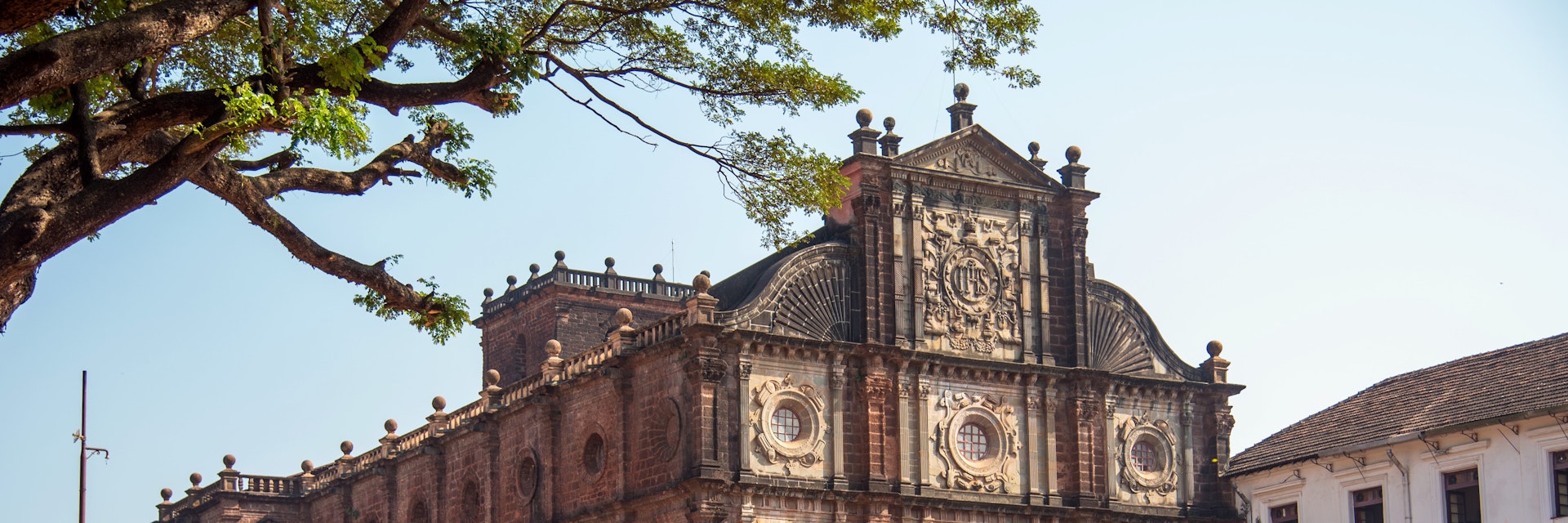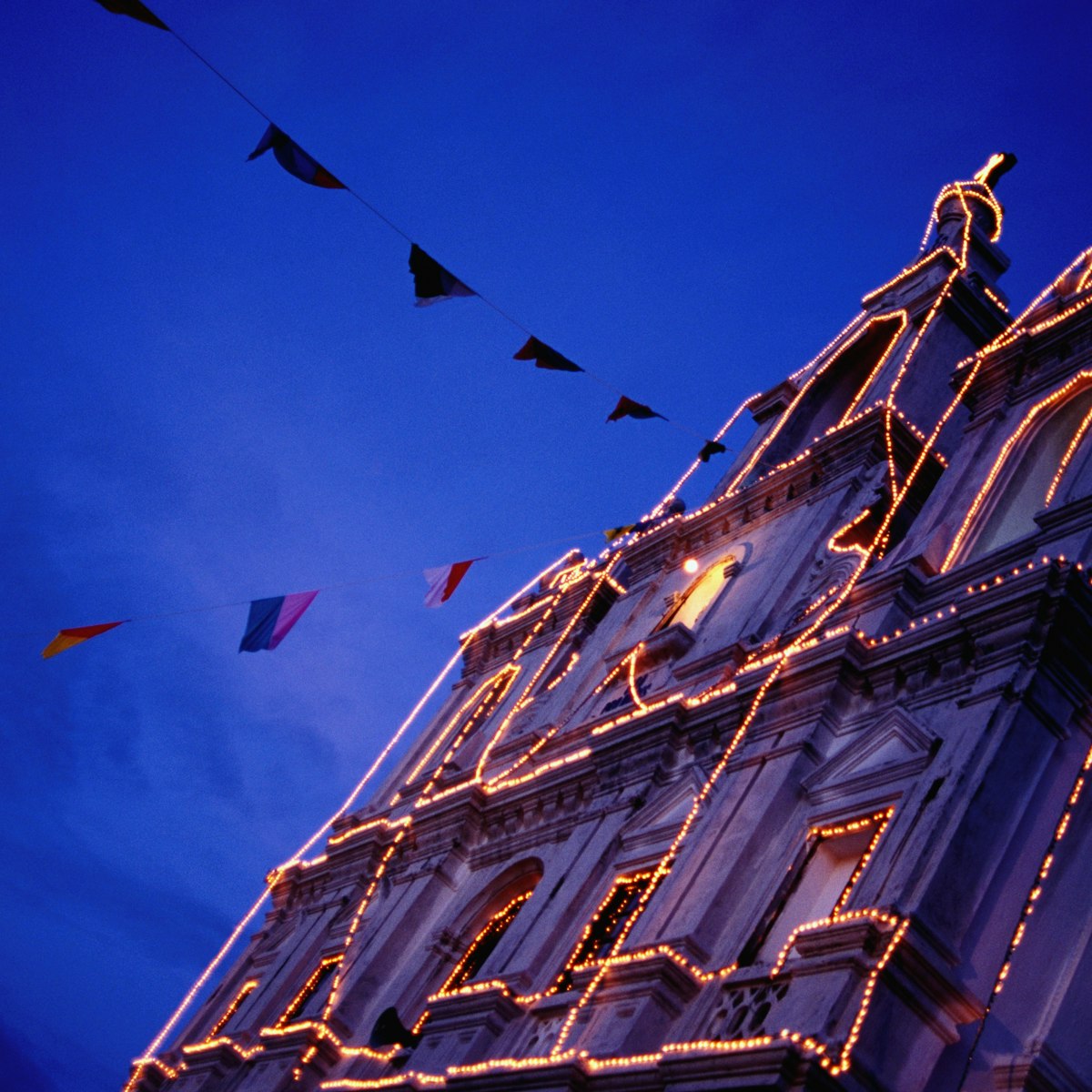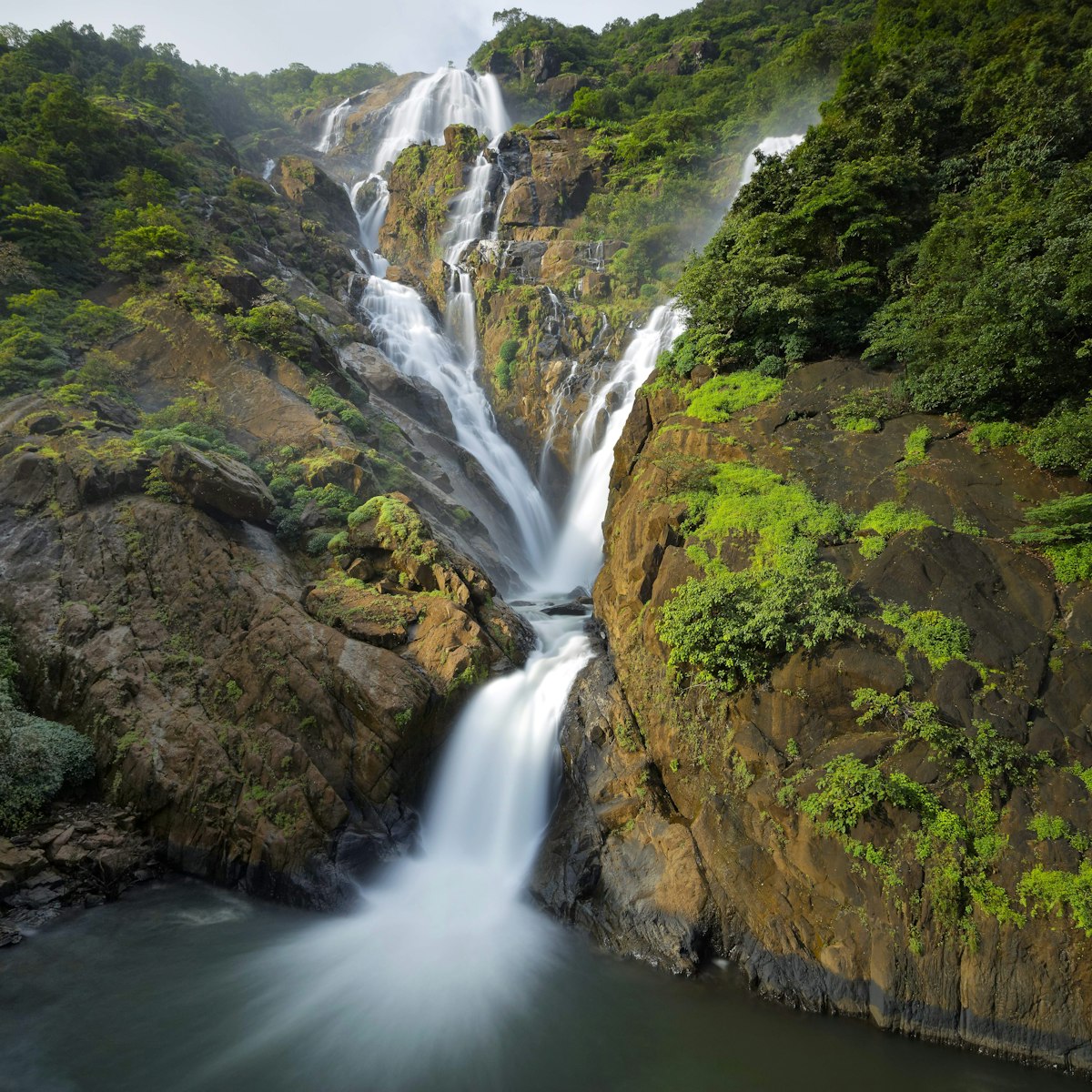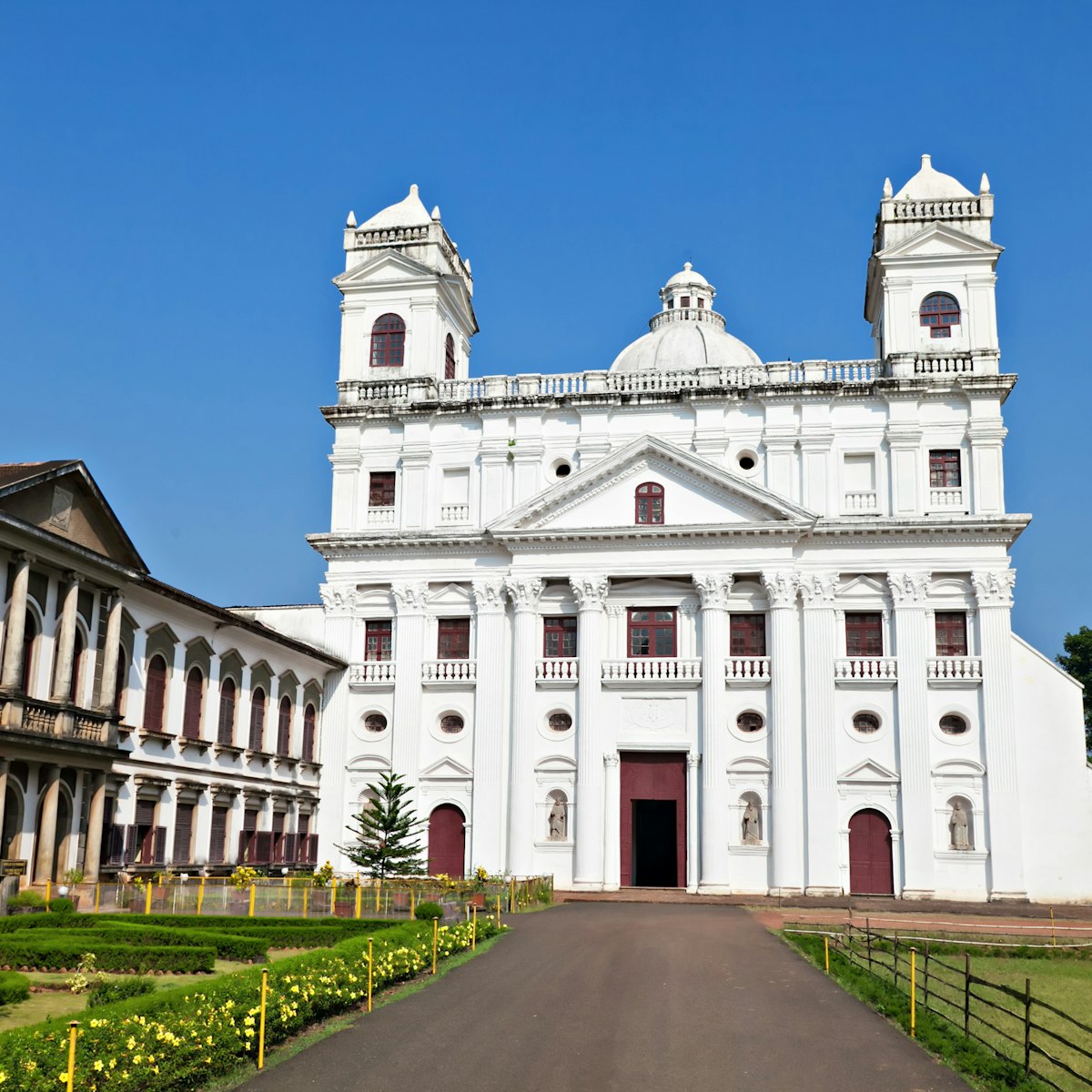Famous throughout the Roman Catholic world, the imposing Basilica de Bom Jesus contains the tomb and mortal remains of St Francis Xavier, the so-called Apostle of the Indies. St Francis Xavier’s missionary voyages throughout the East became legendary. His ‘incorrupt’ body is in the mausoleum to the right, in a glass-sided coffin amid a shower of gilt stars. Freelance guides at the entrance will show you around for ₹100.
Construction on the basilica began in 1594 and was completed in 1605, to create an elaborate late-Renaissance structure, fronted by a facade combining elements of Doric, Ionic and Corinthian design. Prominent in the design of the facade is the intricately carved central rectangular pediment, embellished with the Jesuit emblem ‘IHS', an abbreviation of the Latin ‘Iesus Hominum Salvator’ (Jesus, Saviour of Men).
This is the only church in Old Goa not plastered on the outside, the lime plaster having been stripped off by a zealous Portuguese conservationist in 1950. Apparently his notion was that exposed to the elements, the laterite stone of which the basilica is built would become more durable and thus the building would be strengthened. Despite proof to the contrary, no one has got around to putting the plaster back yet; hence, some of the intricate carving is eroding with the dousing of each successive monsoon.
Inside, the basilica’s layout is simple but grand, contained beneath a simple wooden ceiling. The huge and ornate gilded reredos (ornamental screen), stretching from floor to ceiling behind the altar, takes pride of place, its baroque ornament contrasting strongly with the classical, plain layout of the cathedral itself. It shows a rather portly St Ignatius Loyola, protecting a tiny figure of the infant Jesus. His eyes are raised to a huge gilded sun above his head, on which ‘IHS’ is again emblazoned, above which is a representation of the Trinity.
To the right of the altar is the slightly grisly highlight for the vast majority of visitors: the body of St Francis Xavier himself. The body was moved into the church in 1622, and installed in its current mausoleum in 1698 courtesy of the last of the Medicis, Cosimo III, Grand Duke of Tuscany, in exchange for the pillow on which St Francis’ head had been resting. Cosimo engaged the Florentine sculptor Giovanni Batista Foggini to work on the three-tiered structure, constructed of jasper and marble, flanked with stars, and adorned with bronze plaques that depict scenes from the saint’s life. Topping it all off, and holding the shrivelled saint himself, is the casket, designed by Italian Jesuit Marcelo Mastrili and constructed by local silversmiths in 1659, whose sides were originally encrusted with precious stones which, over the centuries, have been picked off.
Crowds are busiest at the basilica during the Feast of St Francis Xavier, held annually on 3 December and preceded by a nine-day devotional novena, with lots of lighthearted festivity alongside the more solemn open-air Masses. Once every 10 years, the saint is given an exposition, and his body hauled around Old Goa before scores of pilgrims. The next one is in 2024.
Passing from the chapel towards the sacristy there are a couple of items relating to St Francis’ remains and, slightly further on, the stairs to a gallery of modern art.
Next to the basilica is the Professed House of the Jesuits, a two-storey laterite building covered with lime plaster. It actually predates the basilica, having been completed in 1585. It was from here that Jesuit missions to the east were organised. Part of the building burned down in 1633 and was partially rebuilt in 1783.
Mass is held in the basilica in Konkani at 7am and 8am Monday to Saturday, at 8am and 9.15am on Sunday, and in English at 10.15am on Sunday. Confession is held daily in the sacristy from 5pm to 6pm.





